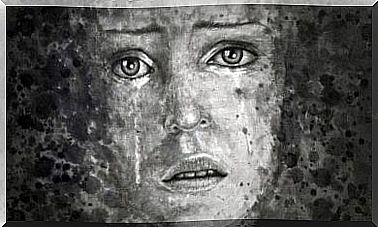Five Common Therapist Mistakes

There are many factors that can influence the development and outcomes of psychotherapy, including these five common therapist mistakes.
There is a common belief that post-therapy recovery is the responsibility of those seeking help. However, this is not true because there are many variables that affect a patient that they have little or no control over.
The characteristics that explain a therapeutic change are the social support and the strength of the person himself. These include:
- the extra-therapeutic change
- the specific techniques used in therapy
- the placebo effect or expectations
- the therapeutic relationship, where the therapist’s mistakes can have a major impact
Along with life changes outside of therapy, a therapeutic relationship between the psychologist and the patient is a very important element in achieving change.
Likewise, it is important to expose certain errors of the therapist that could jeopardize therapeutic cooperation. This factor represents approximately 40% in the progress a patient can make with the help of psychotherapy (Corbella and Botella, 2004).
Five common therapist mistakes
The following list is based on a chapter of Introduction to Psychotherapy: Common Clinical Wisdom by Pipes and Davenport, which lists some of the most common mistakes.

1. Trying to solve the problem without really understanding it
This is one of the most common mistakes made by therapists. While certain forms of therapy, such as psychoanalysis, seek a comprehensive understanding of the patient’s problems and invest time and effort in understanding their story, the truth is that this is not the case with all therapies.
With many of these therapies, the minimum performance of each session represents quality. For example, the less time it takes to complete a therapy, the better the therapist is.
Some psychologists can therefore be satisfied with superficial information. Then they narrow down the problems and intervene without evaluating other areas, which seem irrelevant.
When a patient attends a session in a bad mood, for example due to poor grades in school, the therapist will evaluate and develop a plan. For example, he can assess the patient’s perfectionism.
The patient may have irrational thoughts about what it means to fall, and the therapist may offer emotional management techniques for when it happens. In short, the therapist will not take into account other important factors.
In this way, the patient may have an eating disorder and have not even talked about it because it never seemed problematic. It may also be that when the patient reported that their diet was deteriorating, the therapist assumed that this phenomenon was simply a result of poor grades.
An intervention that is not preceded by a good evaluation will fail. Nothing will happen if the therapist doesn’t take the time to evaluate and just wants to start an intervention as soon as possible.
2. Inappropriate Behavior
The therapist’s verbal and non-verbal interventions must have functional value in a session. While humor, talkativeness, satire, and jokes are often helpful in deepening a therapeutic partnership, therapists should nevertheless exercise caution.
They should consider these types of interventions with a purpose. Whether confronting fear or uncovering ideas for understanding, there must be a purpose.
The therapist must also control their laughter. It is important that he reinforces the patient’s intervention. So it is necessary to examine the content of a joke, because its purpose usually indicates something specific.
How does it relate to the patient’s problem? Does he want to be joked about? For example, as a therapist, you can talk to someone who doesn’t take anything seriously and can’t control their anger. Then at one point he makes a joke. When you laugh, you reinforce the idea that such tantrums are not important.
This is also extrapolated to control the therapist’s laughter if he wants to reduce his own anxiety. If the therapist is not sure whether a patient is finding it difficult, he laughs to calm down.
In fact, he also conveys the message that what has been said is funny. This can confuse the patient. For example, he will not feel safe in the therapeutic collaboration.
3. Leading their client to failure
Spectacular changes and fast performance are not the norm. A therapist’s enthusiasm or haste can steer therapy in this direction, even if it isn’t actually possible. It could be because he is trying to broaden his social network, have new experiences or perform actions that are not really valuable.
One of the common mistakes therapists make is not addressing issues that are difficult for the patient. Perhaps encouraging a patient to make more friends is something the patient is not prepared for.
Things can go very wrong if the person doesn’t have the skills to hold a conversation. This may be because the patient is unable to control the anxiety in certain situations.
In many cases, the lack of results is not the responsibility of a patient, but of the therapist. This is because the procedure must be intelligent. All tasks and recommendations proposed by the therapist must be appropriate to the patient’s needs. It is very important to keep the pace in mind.
4. Trying to be their friend

A therapist has not invested years in psychotherapist training just to be someone who listens and gives advice. Therefore, many experts agree that they should not be friends with their clients. It is not suitable for their therapeutic relationship and it makes confrontations difficult.
It can also cause the tasks in therapy to be viewed as optional and the client may become angry with the therapist’s expectations as a friend. This is one of the mistakes of therapists that is really hard to correct.
Therefore, experts should do everything they can to avoid doing things that the patient may see as amicable. For example, do not comment on the client’s appearance unless it is a therapeutic issue.
Never lend money to the patient or give advice on what to do and what not to do. In addition, there should be no socialization outside the practice area.
5. Poor approach to interventions
There are different types of interventions that can cause a patient to withdraw, distort messages and feel useless. If he feels this way and the feeling doesn’t change during the rest of the sessions, then the therapy will not be effective. Do not forget about the iatrogenic effects of the therapy on a patient.
While it is normal for a therapist not to criticize directly, if you are impatient, the patient may feel judged. Likewise, if you tell him that he is not interested in change or that he is behaving badly, this can also happen.
There will be times when a therapist aligns with people with whom the patient does not. It’s risky and counterproductive to be so explicit. It is better to try to understand what the patient has to say and delve into his emotions than to say he is wrong.
Conclusion
Finally, therapists should avoid certain phrases that cause their client to become defensive, such as:
- “Complaining doesn’t change anything.”
- “You are too defensive.”
- “Don’t feel sorry for yourself.”
Instead, focus on the patient’s problems rather than correcting their values, as this will make the therapy less arduous. Taking care of the therapeutic cooperation is an important goal in this context, so that emotions such as enthusiasm, ignorance or ego do not push the patient away.
So much for this article on common therapist mistakes, we hope you learned something from it!









